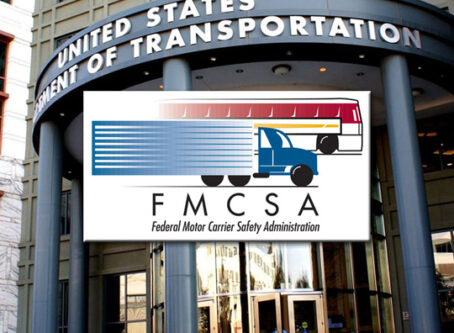Trucker’s dashcam center of Florida Supreme Court case
The Florida Supreme Court recently heard oral arguments in a case that could change summary judgment rules, with a trucker’s dashcam footage the center of the debate.
On Oct. 8, Florida’s high court heard oral arguments from attorneys for Wilsonart and the estate of Jon Lopez. Lopez was killed after his vehicle struck the rear of a Wilsonart truck. Wilsonart moved to have the case dismissed, submitting dashcam footage refuting eyewitness testimony that put the blame on Samuel Rosario, the trucker, for the crash.
The trial court dismissed the case. However, an appellate court reversed that decision, pointing out that state summary judgment standards are more restrictive. That standard, Rule 1.510, allows for summary judgment if the “evidence on file show that there is no genuine issue as to any material fact.” Precedent set in Florida allows for the denial of summary judgment based on the smallest of counterclaims.
At the heart of this case is whether or not there should be an exception to Florida’s restrictive summary judgment standards when video evidence completely negates or refutes conflicting evidence.
The original lawsuit deals with a fatal truck-involved crash. Defendants argue dashcam footage exonerates the trucker from any negligence or blame. Details of the case can be found here.
Wilsonart’s argument
Representing Wilsonart, Sean McDonough’s main argument was based on the language of Florida’s summary judgment standards. Specifically, it must be interpreted in a manner that allows for video evidence to be applied.
“The facts of this case beg for summary judgment,” McDonough said. “Mr. Rosario’s dashcam video clearly repudiated the evidence plaintiff put forth in response to our motion for summary judgment. The (appellate court) opinion shows that it wanted to grant summary judgment, but grappled with how to get there.”
The issue with the courts, McDonough said, is “the unworkable standard” of Florida case law and the phrase “no genuine issue of material fact.”
“The current standard repeated in Florida law requires movant to show the nonexistence of even the slightest doubt about any material fact, but Rule 1.510 plainly requires the movant to show that there is no genuine issue of any material fact,” McDonough said. “How do we interpret the rule of plain language?”
In this case, the keywords are “genuine” and “material,” which are there for a reason, McDonough argued. If the standard was nonexistence of slightest doubt, than lawmakers would have no need for those two keywords. The current summary judgment standard ignores the qualifying term “genuine.”
McDonough also addressed issues with the dashcam footage and Lopez’s arguments. At the trial level, Rosario was accused of a sudden lane change. Now, that argument has changed to claims of Rosario straddling two lanes. Either way, McDonough argued, there was no sudden movement. Wilsonart’s attorney stated the video shows Rosario maintaining a straight, consistent driving pattern for 44 seconds.
Florida state law presumes certain responsibilities for following drivers, including being alert and maintaining a safe distance. With the video showing Rosario driving “straight as an arrow,” McDonough argued, even if he was partially in the right lane, that is not the proximate cause of the crash.
There are four scenarios where a rear crash is the fault of the lead driver: Sudden lane change, sudden stop, illegal/improper stop and a mechanical failure. Straddling a lane for 44 seconds while otherwise moving straight forward is not a recognized fifth scenario for negligence or proximate cause in this case, as Lopez had more than enough time and warning to stop safely, McDonough argued.
Justice Jorge Labarga asked what will happen if during a motion for summary judgment the other party contests the video with some video expert suggesting it has been tampered with? How far can a trial court go in terms of not accepting counter affidavits? That could lead judges to make a lot of factual findings typically left for juries. McDonough said that situations where parties disagree with the legitimacy of the video will be rare. In those cases, there would be an issue of summary judgment. However, no one is contesting the legitimacy of the video in this case.
Question of judicial jurisdiction in summary judgment standards
Bryan Gowdy, attorney for Lopez, did not focus on how the standard should apply. Rather, his argument was based on the fact this is a legislative issue, not a judicial one.
“I will confine my arguments to what the law is, not what I think or Mr. Lopez thinks the law should be,” Gowdy said in opening remarks.
Gowdy pointed out that in order for the court to overturn precedent regarding Rule 1.510, there would need to be some sort of mistaken interpretation or otherwise serious interpretive legal error. However, that was not what is being asked of the courts. Essentially, if the appellate court wants a law changed as it asks in its opinion in the case, it should not do so in a legislative manner. Rather, the courts can only change the standard by pointing to interpretive mistakes by the court.
For the most part, Gowdy relied on an originalism argument, citing cases as far back as the late 1800s.
As is customary in interpreting laws, Gowdy argued the courts need to fall back on definitions that were contemporaneous at the time. In this case, the rules were adopted in the 1950s and relied on case law from the decades prior. All cases leading up to the adoption of the summary judgment rule used the current standard, Gowdy said. Therefore, it was the intent of the legislature at the time to have summary judgment rules be interpreted as they have been for so many decades. However, Justice Carlos G. Muñiz pointed to a case from the 1870s that rejected that standard.
Justice Alan Lawson agreed with Gowdy’s point that there needs to be a demonstrable error in prior precedent when overturning summary judgment standards. However, he also pointed out that video evidence did not exist when the standards were adopted. Therefore, the court is simply applying the rules to something that could never have been contemplated when the rule was adopted. Is there room for a different application without changing the standard?
Contentious battle for summary judgment changes
The Wilsonart dashcam case has garnered widespread attention. Compelling arguments have been made both for and against amending summary judgment standards. The following groups filed briefs as amicus curiae before Lopez’s attorneys filed the response brief:
- Florida Trucking Association.
- U.S. Chamber of Commerce.
- Florida Justice Reform Institute.
- Florida Defense Lawyers Association.
- Product Liability Advisory Council.
- Federation of Defense and Corporate Counsel.
- Business Law Section of the Florida Bar.
- Florida Chamber of Commerce.
- Florida Health Care Association.
- Associated Industries of Florida.
Nearly every amicus brief filed asks the state Supreme Court to adopt a federal standard established by the U.S. Supreme Court commonly known as the Celotex Trilogy.
Essentially, once a party moving for summary judgment meets its initial burden of establishing an absence of material fact, the burden then shifts to the opposing party to provide evidence of their claims, not merely showing there “is some metaphysical doubt as to the material facts,” according to the U.S. Supreme Court.
Unlike Florida law, the Celotex Trilogy standard provides no obligation on the movant to introduce evidence to negate the claim. Every amicus brief filed in the Wilsonart dashcam case wants Florida to move to that standard as 41 other states have.
That is, except for two that were filed in early June.
Those amicus curiae briefs come from the American Board of Trial Advocates and a group of retired Florida state court justices. Deviating from the other amicus briefs, the two groups sided with Lopez. The American Board of Trial Advocates echoed Lopez’s argument of going through proper channels to change standards.
“ABOTA does not intend to advocate for one summary judgment standard over another in its amicus brief,” the group stated. “Rather, ABOTA will encourage the court to go through the rules committee process prior to making any change to the current iteration of the rule.”
The group of judges made a similar argument.
“To the extent this court is contemplating changing the summary judgment standard in Florida state courts to mirror the standard as applied in federal court, the retired judges believe that any such change should go through a rules committee so that the committee can receive comments from both practitioners and from sitting state court judges – whose workload and resources would be impacted by the change,” the judges stated. LL









